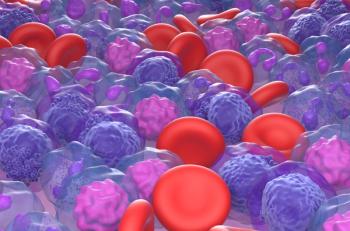
Secukinumab Linked to Longer Time to JIA Disease Flare
Juvenile idiopathic arthritis (JIA) disease flare was significantly longer in children with enthesitis-related arthritis and juvenile psoriatic arthritis treated with secukinumab compared with placebo.
Secukinumab also demonstrated a safety profile consistent with the adult indications of PsA and axial spondyloarthritis.
The 2-year study included 86 patients who were biologic naïve and aged 2 to younger than 18 years, with a median age of 14 years. Of this group, 52 patients had ERA and 34 had JPsA.
In treatment period 1 (TP1) up to week 12, all patients received open-label subcutaneous secukinumab, with a 75-mg dose for patients weighing less than 50 kg and a 150-mg dose for patients weighing 50 kg or more. At week 12, 75 patients who responded to the treatment entered treatment period 2 (TP2); 44 patients had ERA and 31 had JPsA. These patients were randomized 1:1 to either continue receiving secukinumab or receive placebo for up to 100 weeks.
Patients who experienced JIA disease flare during TP2 immediately entered treatment period 3 (TP3), where they received open-label secukinumab up to week 104.
During TP2, the authors observed a statistically significant longer time to JIA disease flare among patients receiving treatment. There were 31 flares noted, occurring in 27% of the secukinumab group and 55% of the placebo group (HR, 0.28; 95% CI, 0.13-0.63; P < .001). Median time to disease flare was not reached for the secukinumab group and was 453 (95% CI, 114-not calculable) days for the placebo group.
Subgroup analysis revealed this longer time to flare was seen both in patients with ERA (HR, 0.45; 95% CI, 0.16-1.28) and JPsA (HR, 0.15; 95% CI, 0.04-0.57) receiving secukinumab.
“At the tested weight-stratified dosages, secukinumab markedly decreased the flare risk by 72% compared with placebo, and there was no new safety signal,” the authors wrote.
Throughout all 3 treatment periods, 79 patients (91.1%) reported at least 1 adverse event (AE). For the total study sample of 86 patients, exposure-adjusted incidence rates per 100 patient-years (PY) were 290.7/100 PY (95% CI, 230.2-362.3) for AEs and 8.2/100 PY (95% CI, 4.1-14.6) for serious AEs.
According to the authors, the significantly longer time to disease flare and improvement in disease activity observed in this study establish secukinumab as a candidate for the treatment of patients with ERA and JPsA. At the same time, they noted multiple limitations, including the small, predominantly White sample and that secukinumab efficacy was assessed indirectly by the occurrence of JIA flares.
“Owing to the large number of placebo-treated patients who met flare criteria in TP2 and who stopped placebo when entering TP3, observed differences in efficacy between secukinumab vs placebo may be blunted,” they said.
“Another limitation of this study is the lack of data on skin manifestations, especially in JPsA patients, although it has been acknowledged that secukinumab demonstrated sustained efficacy across various skin outcomes in previously reported randomised trials in paediatric patients with [psoriasis],” they added.
Reference
Brunner HI, Foeldvari I, Alexeeva E, et al. Secukinumab in enthesitis-related arthritis and juvenile psoriatic arthritis: a randomised, double-blind, placebo-controlled, treatment withdrawal, phase 3 trial. Ann Rheum Dis. Published online August 12, 2022. doi:10.1136/ard-2022-222849
Newsletter
Stay ahead of policy, cost, and value—subscribe to AJMC for expert insights at the intersection of clinical care and health economics.













































